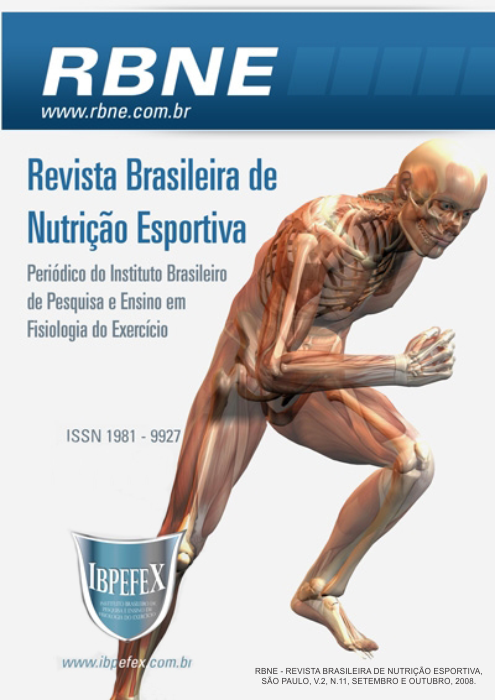Comparison anthropometric of old person practice physical activity and doesn’t practice physical activity of a recreational center of the Recife/PE: an association with cardiovascular risk
Abstract
The oldness guides to structurally lost and arise the cardiac risk. In 2025 the word will have 1,2 billions of old person and 30 millions in Brazil. Objectives: Compare a between old persons woo practice physical activity (PFA) and old person who doesn’t practice physical activity (DPFA), about of cardiac risk. Materials and methods: It was used two groups of 17 persons, being one physically active and the other doesn’t. They were separated in four subgroups, according whit chronological age. The dates were collected in a recreational center in Recife. Results: The average of the age, weight, stature, of the PFA, is the 67.7 ± 6.5 year, 69.9 ±13.9 Kg, 161.8 ± 9.0 cm, respectively. The BMI indicates one ouver weight and a thigh level of cardiac risk, and the relation waist/hip was 0.89 ± 0.10. The average of age, weight, stature of the DPFA is 72.0 ± 6.9 years, 63.1 ± 11.5 Kg), 150.6 ± 8.7 cm, respectively. The BMI of DPFA, shows overweight and a high level of cardiac risk. The relation waist/hip was 0.91 ± 0.11. Discussion: the age demonstrate be a factor of risk. The result was significant between globes weight, stature and age, average, while the results wasn’t. Significant between generals average of BMI and relation waist/hip. On the PFA group a relation waist/hip had correlation with all the variables. Conclusion: The physical exercise doesn’t create any anthropometric changes in the old persons, being necessary more research about the subject.
References
Berlezi, E.M.; Rosa, P.V.; Souza, A.C.A.; Schneider, R.H. Comparação antropométrica e do nível de aptidão física de mulheres acima de 60 anos praticantes de atividade física regular e não praticantes. Revista Brasileira de Geriatria e Gerontologia. Rio de Janeiro v.9 n.3 2006.
Caromano, F.A.; Ide M.R.; Kerbauy, R.R. Manutenção na Prática de Exercícios por Idosos Revista do Departamento de Psicologia - UFF, v. 18 n. 2 Jul./Dez. 2006 p.177-192.
Cabrera, M.A.S.; Jacob Filho,W. Obesidade em Idosos: Prevalência, distribuição e Associação com hábitos e co- morbidades.Arquivo Brasileiro de Endocrinologia e Metabolismo. V.45 n.5 2001 p.494-501.
Franchi, K.M.B.; Montenegro Junior, R.M. Atividade Física: Uma Necessidade para a Boa Saúde na Terceira Idade. RBPS v.18 n.3 2005 p.152-156.
França, A.M.; Barbosa, M.T.S. Perfil da Composição Corporal de Mulheres de Diferentes Faixas Etárias Praticantes de Atividade Física Regular Movimentum Revista Digital de Educação Física. Minas Gerais v.2 n.1 fev/jul 2007.
Matsudo, S.M. Atividade física na promoção da saúde e qualidade de vida no envelhecimento Revista Brasileira Educação Física e do Esporte, São Paulo, v.20 set. 2006 p.135-37, Suplemento n.5.
Matsudo, S.M.; Barros Neto, T.L.; Matsudo, V.K.R. Perfil antropométrico de mulheres maiores de 50 anos, fisicamente ativas, de acordo com a idade cronológica - evolução de 1 ano Revista Brasileira de Ciência. e Movimento. Brasília v. 10 n. 2 abril 2002 p.15-26.
Matsudo, S.M.; Matsudo, V.K.R.;Barros Neto, T.L. Impacto do envelhecimento nas variáveis antropométricas, neuromotoras e metabólicas da aptidão física. Revista Brasileira Ciência e Movimento. Brasília v.8 n.4, setembro 2000 p.21-32.
Mendonça, T.T.; Ito, R.E.; Bartholomeu,T.; Tinucci,T.; Forjaz, C.L.M. Risco cardiovascular, aptidão física e prática de atividade física de idosos de um parque de São Paulo. Revista Brasileira Ciência e Movimento. Brasília v. 12 n. 2 junho 2004. p.19-24.
Nahas, M.V. Atividade Física, Saúde e Qualidade de Vida: conceitos e sugestões para um estilo de vida ativo. Londrina. Midiograf. 2001.
Oliveira, G.F. Bartholomeu,T.; Tinucci,T.; Forjaz, C.L.M. Risco Cardiovascular de Usuários Ativos, Insuficientemente Ativos e Inativos de Parques Públicos. Revista. Brasileira de Cineantropometria e Desempenho Humano v.10 n.2 2008 p.170-175.
Peixoto. S.V.: Gatti, L.; Afradique, M.E.; Lima-Costa, M.F. Custo das internações hospitalares entre idosos brasileiros no âmbito do Sistema Único de Saúde Epidemiologia e Serviços de Saúde. Revista do Sistema Único de Saúde v. 13 n. 4 out/dez de 2004. p.239-246.
Pereira, J.C. e Colaboradores O Perfil de Saúde Cardiovascular dos Idosos Brasileiros Precisa Melhorar: Estudo de Base Populacional. Arquivo Brasileiro de Cardiologia v. 91 n. 1 2008 p.1-10.
Silva, A.G.M.; Zogaib, F.G.; Amorim, L.A.C.; Filho,J.F.; Fortes, M.S.R.; Dantas, E.H.M. Estudo de associação entre o padrão de distribuição de gordura corporal e o perfil lipídico de mulheres adultas praticantes de atividade aquática. Fitness & Performance Journal, Rio de Janeiro v. 5, n. 3, p. 2006. p.161-167.
Santos, D.M.; Sichieri, R. Índice de massa corporal e indicadores antropométricos de adiposidade em idosos Revista de Saúde Pública v.39 n.2 p.163-168
Tribess, S.; Virtuoso Jr, J.S. Prescrição de Exercícios Físicos Para Idosos. Revista Saúde.Com v.1 n.2 2005 p.163-172.
Vargas Netto, F.X.; Vargas, L.A. Atividade física, terceira idade e longevidade. Revista Ciência em Movimento v.4 2000.
Weinstein, A.R. The Joint Effects of Physical Activity and Body Mass Index on Coronary Heart Disease Risk in Women Archives of Internal Medicine, v.168, n.8, 2008.
World Health Organization – WHO. Noncommunicable Disease Prevention and Health Promotion. Physical Activity for various population groups – Aging Population. [artigo online] [capturado em 26 fev. 2004]. Disponível em: http://www.who.int/inf-fs/en/fact135.html
Authors who publish in this journal agree to the following terms:
- Authors retain the copyright and grant the journal the right of first publication, with work simultaneously licensed under the Creative Commons Attribution License BY-NC which allows the sharing of the work with acknowledgment of the authorship of the work and initial publication in this journal.
- Authors are authorized to enter into additional contracts separately for non-exclusive distribution of the version of the work published in this journal (eg, publishing in institutional repository or book chapter), with acknowledgment of authorship and initial publication in this journal.
- Authors are allowed and encouraged to post and distribute their work online (eg, in institutional repositories or on their personal page) at any point before or during the editorial process, as this can bring about productive change as well as increase impact and impact. citation of published work (See The Effect of Free Access).






